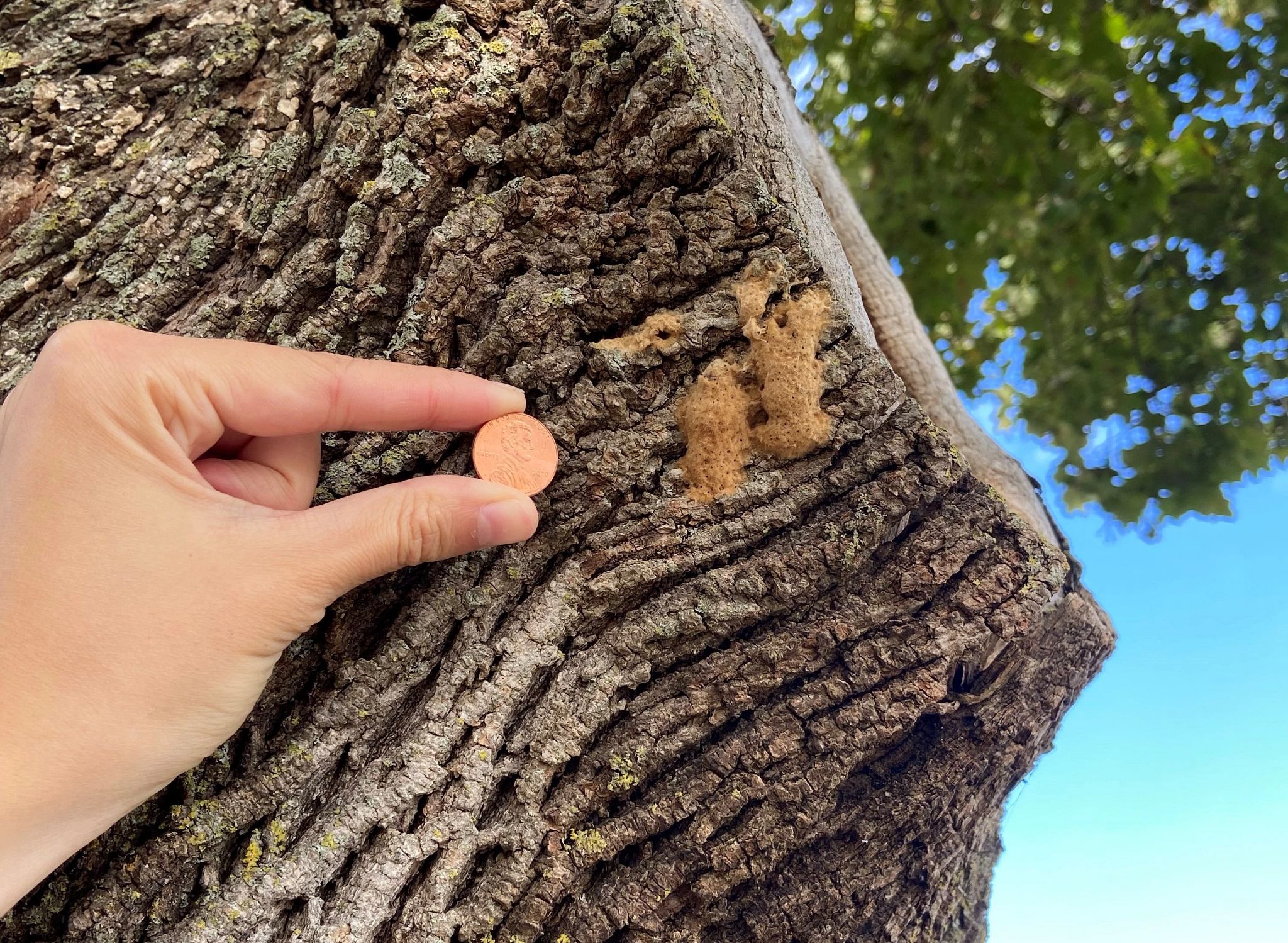Contact: Bill McNee, DNR Forest Health Specialist
bill.mcnee@wisconsin.gov or 920-360-0942
Help Remove Gypsy Moth Egg Masses This Fall
Gypsy Moth Numbers On The Rise In 2021
 The DNR is asking the public to help look for and dispose of egg masses produced by adult gypsy moths during the summer.
Photo credit: Wisconsin DNR
The DNR is asking the public to help look for and dispose of egg masses produced by adult gypsy moths during the summer.
Photo credit: Wisconsin DNR
OSHKOSH, Wis. – The Wisconsin Department of Natural Resources (DNR) is asking the public for help this fall by looking for and disposing of egg masses produced by adult gypsy moths during the summer.
Gypsy moths are invasive pests that lay egg masses that are tan-colored lumps about the size of a nickel or quarter. Each mass contains hundreds of eggs and can be found on trees, buildings and other outdoor objects, including the inside of firewood piles and birdhouses.
In 2021, gypsy moth populations increased for a second consecutive summer due to weather conditions that allowed more caterpillars to survive and become adult moths.
Populations usually grow fastest and are often first noticed on:
- Preferred tree species (oak, crabapple, birch, etc.) growing on mowed lawns
- Large oaks with rough bark, especially on or adjacent to mowed lawns
- Dry sites with sandy soil and abundant oak
Checking for egg masses helps residents predict the number of caterpillars for the following summer and take necessary action. You can discover more egg masses once leaves have fallen from the trees.
Treating or removing masses in the fall prevents large numbers of eggs from hatching into hungry, leaf-eating caterpillars in the spring. Large numbers of these caterpillars can be a tremendous nuisance that could even kill trees.
To treat or remove egg masses, spray the masses that are safely within reach with horticultural oil or gently scrape them into a container of soapy water to soak for a few days before throwing in the trash. Do not use motor oil or other lubricants, as these can harm the tree and be a pollutant. Old masses with no viable eggs will appear faded and feel spongy when touched.
If weather conditions are favorable again in 2022, the most noticeable increase in caterpillar numbers would likely occur in southern Wisconsin counties, where conditions were driest this past spring and summer.
Visit the Wisconsin gypsy moth website for information about egg mass oiling and removal, physical controls, population survey methods and insecticide applications to high-value host trees. An arborist or forester may also be a good resource for anyone dealing with gypsy moths.

